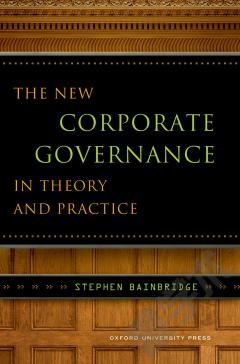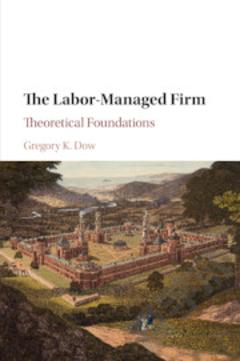Governing the Firm: Workers' Control in Theory and Practice
1. Introduction: 1.1 Economic systems 1.2 The control dimension 1.3 Looking for clues 1.4 A projected synthesis 1.5 The plan of the book 2. Normative perspectives: 2.1 Why care about workers' control? 2.2 Equality 2.3 Democracy 2.4 Property 2.5 Dignity 2.6 Community 2.7 The author shows his cards 3. Workers' control in action (I): 3.1 Surveying the terrain 3.2 The Plywood cooperatives 3.3 The Mondragon cooperatives 4. Workers' control in action (II): 4.1 The Lega cooperatives 4.2 Employee stock ownership plans 4.3 Codetermination 5. Conceptual foundations: 5.1 The theory of the firm 5.2 The nature of authority 5.3 The locus of control 5.4 Why firms cannot be owned 5.5 Asset ownership 5.6 Residual claims 6. Explanatory strategies: 6.1 The symmetry principle 6.2 The replication principle 6.3 Transaction costs 6.4 Optimal contracting 6.5 Adverse selection 6.6 Repeated games 6.7 Path dependence 6.8 Cultural explanations 6.9 The strategy to be pursued 7. A question of objectives: 7.1 What do labor-managed firms maximize? 7.2 The Illyrian firm 7.3 Membership markets and labor markets 7.4 Membership markets and stock markets 7.5 Imperfect membership markets 7.6 What does the evidence say? 7.7 Some lessons 8. Views from economic theory I: 8.1 Explaining the rarity of workers' control 8.2 Asset ownership: incentives and information 8.3 Asset ownership: bargaining and information 8.4 Can asset specificity explain the rarity of workers' control? 8.5 Work incentives without risk aversion 8.6 Work incentives with risk aversion 8.7 Can work incentives explain the rarity of workers' control? 9. Views from economic theory (II): 9.1 Capital constraints 9.2 Debt financing 9.3 Equity financing 9.4 Can capital constraints explain the rarity of workers' control? 9.5 Portfolio diversification 9.6 Can portfolio diversification explain the rarity of workers' control? 9.7 Collective choice 9.8 Can collective choice explain the rarity of workers' control? 10. Transitions and clusters: 10.1 Organizational demography 10.2 Formation rates 10.3 Worker takeovers 10.4 Degeneration 10.5 Investor takeovers 10.6 Survival rates 10.7 Business cycles 10.8 Clusters 11. Toward a synthesis: 11.1 The causal tapestry 11.2 Credible commitment toward labor 11.3 Credible commitment toward capital 11.4 The composition of control groups 11.5 The commodification of control rights 11.6 Intellectual history and current debates 11.7 Is workers' control a unitary phenomenon? 12. Getting there from here: 12.1 Practical considerations 12.2 A modest proposal 12.3 Reassuring shareholders 12.4 Governing firms 12.5 Trading jobs 12.6 Sample calculations 12.7 The long and winding road.
{{comment.content}}








 京公网安备 11010802027623号
京公网安备 11010802027623号